Difference between revisions of "Sheepskin - Lambskin"
| (24 intermediate revisions by one user not shown) | |||
| Line 9: | Line 9: | ||
| − | == | + | ==What are wool sheep compared to hair sheep?== |
| − | + | Wool sheep are known for their dense and soft wool, which consists of fine fibers. This wool grows continuously and needs to be regularly sheared, as it can accumulate excessively and negatively affect the well-being of the sheep. The wool from wool sheep provides good insulation and is often used in the production of textiles and other wool products. | |
| + | On the other hand, hair sheep do not have dense wool but rather a mixture of hair and bristles. Their hair growth is less dense, and the hair is coarser compared to the wool of wool sheep. Hair sheep do not require shearing as their hair growth is limited, and the hair naturally sheds. They do not need human intervention for shearing. | ||
| − | + | ||
| + | ==Sheepskin - Lambskin== | ||
| + | The use of lamb skins and sheepskins was of great importance to many early cultures. People valued the warmth and comfort that these skins provided. They were used as [[Leather clothing|clothing]], blankets, and bedding to protect against cold and weather conditions. Especially in regions with cold climates, lamb skins and sheepskins were invaluable due to their insulating properties. | ||
| + | |||
| + | With the industrial revolution in the 18th and 19th centuries, mass production of sheepskins and lamb skins began. The skins were used for various purposes, including the production of clothing, [[Leather floors -Leather tiles - Leather panels|carpets]] and other products. Sheep farming intensified to meet the growing demand for skins. | ||
| + | |||
| + | Today, lamb skins and sheepskins are still widely used, especially in the clothing industry and the home sector. They are valued as high-quality materials that offer warmth, comfort, and durability. | ||
| + | |||
| + | |||
| + | <p align=center> | ||
| + | [[bild:Lammfell-02-Merino.jpg|250px]] | ||
| + | [[bild:Schaffell-02.jpg|250px]] | ||
| + | </p> | ||
| + | <p align=center> | ||
| + | ''Above: Merino lamb. Lambskins are finer than sheepskins.'' | ||
| + | </p> | ||
| + | |||
| + | |||
| + | Lamb skins and sheepskins are produced worldwide as sheep farming is practiced in many regions of the world. However, the countries where the production of lamb skins and sheepskins is most common vary depending on climate, traditions, and economic conditions. | ||
| + | Some of the most significant countries in sheepskin production include Australia, New Zealand, China, India, and Turkey. Additionally, lamb skins and sheepskins are produced in the United States, United Kingdom, Russia, Argentina, South Africa, and various other European countries. | ||
| + | |||
| + | Different sheep breeds are used worldwide for the production of lamb skins and sheepskins, depending on the desired characteristics of the skins and the climatic conditions of the region. Merino sheep are known for their fine and soft wool. They are mainly bred in Australia and New Zealand and provide high-quality lamb skins and sheepskins with excellent insulation and warmth. Romney sheep originated in England and are now bred worldwide, providing durable and robust skins. Karakul sheep are primarily bred in Central Asia, especially in countries like Afghanistan, Iran, and Uzbekistan. Their skins are known for their curly structure and are often processed into furs. Other breeds used include Suffolk, Dorset, and Rambouillet, although the number of breeds used is much larger. | ||
| Line 23: | Line 45: | ||
</p> | </p> | ||
<p align=center> | <p align=center> | ||
| − | '' | + | ''There are infinitely many sheep breeds with different fur.'' |
</p> | </p> | ||
| + | |||
| + | |||
| + | Sheepskin and lambskin are the hides of wool sheep and wool lambs. Sometimes sheepskin is called lambskin, even if it is not from a lamb. Lamb is a young sheep that is under one year of age. So if you want lambskin, you should ask whether it is actually lambskin or sheepskin. | ||
| + | Sheepskin and lambskin are the skins with fur. Without the fur, they are called [[sheep leather]] and [[lamb leather]]. | ||
| + | |||
| + | Sheepskins and lambskins are often sold as single pelts. They can be used for a pram or a buggy or to keep seating areas of a chair warm and soft. However, their warmth and softness also make them ideal for [[leather clothing|lambskin coats, jackets]], [[Leather gloves|gloves]], [[Leather hat|caps]], [[leather shoes|shoes]] and [[leather boots|boots]] in winter. | ||
| + | |||
| + | The wool of the lambskin can absorb moisture up to 30% in the form of water vapour, without feeling wet or cold. The scarf structure of the wool fibre repels the dirt and thus has a natural self-cleaning quality. | ||
<p align=center> | <p align=center> | ||
| − | [[bild: | + | [[bild:Rohhaut-Lammfelle-001.jpg|500px]] |
| − | + | ||
</p> | </p> | ||
<p align=center> | <p align=center> | ||
| − | '' | + | ''Lambskins as [[Rawhide]].'' |
</p> | </p> | ||
| − | + | Lambskins are 100% protein. Since protein is not a breeding ground for viruses and bacteria, lambskins are often medically recommended. Lambskins have an antibacterial effect and protect the skin. Therefore, it is used for the protection of wounded skin. | |
<p align=center> | <p align=center> | ||
| − | [[bild: | + | [[bild:Schafsfelll-Sattel-01.jpg|500px]] |
| + | </p> | ||
| + | <p align=center> | ||
| + | [[bild:Schafsfelll-Sattel-02.jpg|500px]] | ||
</p> | </p> | ||
<p align=center> | <p align=center> | ||
| − | '' | + | ''Sheepskins are often placed under the [[Leather saddle|saddle]] in the Pantanal in Brazil.'' |
</p> | </p> | ||
| − | + | <p align=center> | |
| + | [[bild:Lammfell-Mittelalter.jpglamb skin middle ages.jpg|500px]] | ||
| + | </p> | ||
| + | <p align=center> | ||
| + | ''Sheepskin on sale on a medieval market.'' | ||
| + | </p> | ||
<p align=center> | <p align=center> | ||
| − | [[bild: | + | [[bild:Sheepskin-motorbike.jpg|500px]] |
| − | + | ||
</p> | </p> | ||
<p align=center> | <p align=center> | ||
| − | '' | + | ''sheepskin-motorcycle.'' |
</p> | </p> | ||
| − | = | + | <p align=center> |
| − | + | [[bild:Lambskin seat pad Brazil Florianopolis.jpg|500px]] | |
| − | + | </p> | |
| − | + | <p align=center> | |
| − | + | ''Lambskins on gastronomy seating in Florianopolis Brazil.'' | |
| − | + | </p> | |
| − | + | ||
| − | = | + | <p align=center> |
| − | + | [[bild:Lambskin-regional-production-01.jpg|500px]] | |
| + | </p> | ||
| + | <p align=center> | ||
| + | [[bild:Lambskin-regional-production-02.jpg|500px]] | ||
| + | </p> | ||
| + | <p align=center> | ||
| + | ''Lambskin from local production in Germany.'' | ||
| + | </p> | ||
| + | |||
| + | |||
| + | ==Other terms== | ||
| + | * '''Suede shearling''' is sheepskin with the suede outside and the pelt inside ([[leather boots|boots]], [[leather gloves|gloves]] etc.) | ||
| + | * '''Beaver lamb''' is a lambskin with shortened hair (about 12 to 16 mm hair length), where the natural crimping is permanently removed by ironing and fixing. | ||
| + | * '''Merino''' lambs come from Spain. It is the leading product in the clothing sector because it has the finest wool and can be obtained in bulk as a raw material. | ||
| + | * Also, '''Tigrado''' lambs come from Spain. The skins have a special wool type. The hair is long and curly. The skins are much smaller than those of the Merino lambs. | ||
| + | * And the '''Merinillo''' hides come from Spain. They are small, very light and have very [[Haptic evaluation of leather surfaces|soft]] skins. The pelt has a silky grip. Due to the rarity, these skins are very expensive. | ||
| + | * '''Double face''' is the same as suede shearling. Only when the [[flesh side]] is smoothed with a [[finish|coating]], the sheepskin is sometimes called [[nappalan]]. | ||
| + | |||
| + | |||
| + | <p align=center> | ||
| + | [[bild:AYASSE sheep skin double face 01.jpg|250px]] | ||
| + | [[bild:AYASSE sheep skin double face 02.jpg|250px]] | ||
| + | </p> | ||
| + | <p align=center> | ||
| + | ''Doubleface lambskin may be worn with the wool or [[flesh side]] outwards (coat of [http://studio-ayasse.com/ studio-ayasse.com]).'' | ||
| + | </p> | ||
| + | |||
| + | |||
| + | ==Lambskin jacket - Lambskin coat== | ||
| + | [[leather clothing|Lambskin jackets or lambskin coats]] have the wool side to the inside and the [[flesh side]] to the outside of the clothing. The outside is therefore [[suede]]. The suede can be smoothed by a coating ([[nappalan]]) to remain less sensitive to humidity and dirt. | ||
| Line 75: | Line 139: | ||
[[bild:Lammfelljacke-06.jpg|500px]] | [[bild:Lammfelljacke-06.jpg|500px]] | ||
</p> | </p> | ||
| + | <p align=center> | ||
| + | ''Typical lambskin jacket with [[Fur - Fur skin|pelt]] on the inside and a [[Gloss of leather|shiny]] [[finish]] on the outside ([[flesh side]]).'' | ||
| + | </p> | ||
| + | |||
| + | |||
| + | <p align=center> | ||
| + | [[bild:Lambskin-lightly-napped.jpg|500px]] | ||
| + | </p> | ||
| + | <p align=center> | ||
| + | ''Typical sheepskin with [[Fur - Fur skin|pelt]] on the inside and on the [[flesh side|outside]] with a lightly [[ironing leather|ironed]] [[Gloss of leather|matt]] [[finish]].'' | ||
| + | </p> | ||
| + | |||
| + | |||
<p align=center> | <p align=center> | ||
[[bild:Lammfelljacke-02.jpg|250px]] | [[bild:Lammfelljacke-02.jpg|250px]] | ||
| Line 80: | Line 157: | ||
</p> | </p> | ||
<p align=center> | <p align=center> | ||
| − | '' | + | ''Typical sheepskin with [[Fur - Fur skin|pelt]] on the inside and and with a light [[leather color|binder-free coloring]] on the [[flesh side|outside]].'' |
</p> | </p> | ||
| − | == | + | ==Lambskin footwear - lambskin gloves== |
| − | + | In winter, nothing is softer and more comfortable than fur footwear to keep your feet warm. | |
| Line 93: | Line 170: | ||
</p> | </p> | ||
<p align=center> | <p align=center> | ||
| − | ''[[ | + | [[bild:Sheepskin-shoe-01.jpg|500px]] |
| + | </p> | ||
| + | <p align=center> | ||
| + | [[bild:Sheepskin-boots.jpg|500px]] | ||
| + | </p> | ||
| + | <p align=center> | ||
| + | ''[[Leather shoes|Lambskin slippers]] - [[Leather shoes|Lambskin shoes]] - [[Leather boots|Lambskin boots]].'' | ||
| + | </p> | ||
| + | |||
| + | |||
| + | <p align=center> | ||
| + | [[bild:Sheep-skin-gloves-01.jpg|500px]] | ||
| + | </p> | ||
| + | <p align=center> | ||
| + | ''[[Leather gloves|Lambskin gloves]].'' | ||
</p> | </p> | ||
==[[Synthetic tanned|Synthetic tanning]]== | ==[[Synthetic tanned|Synthetic tanning]]== | ||
| − | + | By using special [[Synthetic tanned|synthetic tannins]], lamb skins achieve an optimum combination of [[leather quality|durability]] and [https://www.colourlock.com/How-To-s/Cleaning-Repairing-Damaged-Leather-Clothing/ washability]. This tanning gives the fur a yellow-beige colour. | |
| − | + | Lambskins are used in colder countries to lay out the baby carriage or cots. According to a study from 2014, children who have slept on animal fur during the first three months of life have a 79% reduced risk of developing asthma later. For this purposes such skins must be [https://www.colourlock.com/How-To-s/Cleaning-Repairing-Damaged-Leather-Clothing/ washable]. | |
| Line 108: | Line 199: | ||
</p> | </p> | ||
<p align=center> | <p align=center> | ||
| − | ''Washable fur with yellow-beige colour from special [Synthetic tanned|synthetic tanning]].'' | + | ''[https://www.colourlock.com/How-To-s/Cleaning-Repairing-Damaged-Leather-Clothing/ Washable] fur with yellow-beige colour from special [[Synthetic tanned|synthetic tanning]].'' |
</p> | </p> | ||
| Line 117: | Line 208: | ||
</p> | </p> | ||
<p align=center> | <p align=center> | ||
| − | ''[[leather production|Alternative tanning | + | ''[[leather production|Alternative tanning method]]. Not clear if washable.'' |
</p> | </p> | ||
| − | == | + | <p align=center> |
| − | + | <flashow>//www.youtube.com/v/fUufawOqoKA&fs=1&color1=0x660000&color2=0x550000&border=1|width=500|height=281,25</flashow></p> | |
| + | <p align=center> | ||
| + | ''The [[tanning]] of haired skins with simple means.'' | ||
| + | </p> | ||
| − | + | ||
| + | ==Artificial fur== | ||
| + | Artificial or synthetic furs are often offered because genuine furs are expensive and are also [[PeTA - People for the Ethical Treatment of Animals|considered unethical]]. Artificial fur is also labelled as "Fourrure artificielle". The fibre material which looks like fur, can be of synthetic or natural origin (wool etc.). | ||
| Line 143: | Line 239: | ||
''Marking of grown lambskin and woven tissue with sheep wool.'' | ''Marking of grown lambskin and woven tissue with sheep wool.'' | ||
</p> | </p> | ||
| − | |||
| − | |||
| − | |||
| Line 159: | Line 252: | ||
* [[Alpaca fur & Llama fur]] | * [[Alpaca fur & Llama fur]] | ||
<br> | <br> | ||
| − | [[bild:Colourlock-02.jpg|16px]] -> [https://www.colourlock.com/ | + | [[bild:Colourlock-02.jpg|16px]] -> [https://www.colourlock.com/How-To-s/Cleaning-Repairing-Damaged-Leather-Clothing/ COLOURLOCK - Leather & Fur Wash Concentrate for sheepskin and lambskin] |
<br> | <br> | ||
[[bild:Lederzentrum-2016-08-Mini-viereckig-Rand-02.jpg|16px]] -> In German: [http://www.lederzentrum.de/tip/index.html#auto www.lederzentrum.de] | [[bild:Lederzentrum-2016-08-Mini-viereckig-Rand-02.jpg|16px]] -> In German: [http://www.lederzentrum.de/tip/index.html#auto www.lederzentrum.de] | ||
Latest revision as of 10:58, 20 July 2023
Contents
What are wool sheep compared to hair sheep?
Wool sheep are known for their dense and soft wool, which consists of fine fibers. This wool grows continuously and needs to be regularly sheared, as it can accumulate excessively and negatively affect the well-being of the sheep. The wool from wool sheep provides good insulation and is often used in the production of textiles and other wool products.
On the other hand, hair sheep do not have dense wool but rather a mixture of hair and bristles. Their hair growth is less dense, and the hair is coarser compared to the wool of wool sheep. Hair sheep do not require shearing as their hair growth is limited, and the hair naturally sheds. They do not need human intervention for shearing.
Sheepskin - Lambskin
The use of lamb skins and sheepskins was of great importance to many early cultures. People valued the warmth and comfort that these skins provided. They were used as clothing, blankets, and bedding to protect against cold and weather conditions. Especially in regions with cold climates, lamb skins and sheepskins were invaluable due to their insulating properties.
With the industrial revolution in the 18th and 19th centuries, mass production of sheepskins and lamb skins began. The skins were used for various purposes, including the production of clothing, carpets and other products. Sheep farming intensified to meet the growing demand for skins.
Today, lamb skins and sheepskins are still widely used, especially in the clothing industry and the home sector. They are valued as high-quality materials that offer warmth, comfort, and durability.
Above: Merino lamb. Lambskins are finer than sheepskins.
Lamb skins and sheepskins are produced worldwide as sheep farming is practiced in many regions of the world. However, the countries where the production of lamb skins and sheepskins is most common vary depending on climate, traditions, and economic conditions.
Some of the most significant countries in sheepskin production include Australia, New Zealand, China, India, and Turkey. Additionally, lamb skins and sheepskins are produced in the United States, United Kingdom, Russia, Argentina, South Africa, and various other European countries.
Different sheep breeds are used worldwide for the production of lamb skins and sheepskins, depending on the desired characteristics of the skins and the climatic conditions of the region. Merino sheep are known for their fine and soft wool. They are mainly bred in Australia and New Zealand and provide high-quality lamb skins and sheepskins with excellent insulation and warmth. Romney sheep originated in England and are now bred worldwide, providing durable and robust skins. Karakul sheep are primarily bred in Central Asia, especially in countries like Afghanistan, Iran, and Uzbekistan. Their skins are known for their curly structure and are often processed into furs. Other breeds used include Suffolk, Dorset, and Rambouillet, although the number of breeds used is much larger.
There are infinitely many sheep breeds with different fur.
Sheepskin and lambskin are the hides of wool sheep and wool lambs. Sometimes sheepskin is called lambskin, even if it is not from a lamb. Lamb is a young sheep that is under one year of age. So if you want lambskin, you should ask whether it is actually lambskin or sheepskin.
Sheepskin and lambskin are the skins with fur. Without the fur, they are called sheep leather and lamb leather.
Sheepskins and lambskins are often sold as single pelts. They can be used for a pram or a buggy or to keep seating areas of a chair warm and soft. However, their warmth and softness also make them ideal for lambskin coats, jackets, gloves, caps, shoes and boots in winter.
The wool of the lambskin can absorb moisture up to 30% in the form of water vapour, without feeling wet or cold. The scarf structure of the wool fibre repels the dirt and thus has a natural self-cleaning quality.
Lambskins as Rawhide.
Lambskins are 100% protein. Since protein is not a breeding ground for viruses and bacteria, lambskins are often medically recommended. Lambskins have an antibacterial effect and protect the skin. Therefore, it is used for the protection of wounded skin.
Sheepskins are often placed under the saddle in the Pantanal in Brazil.
Sheepskin on sale on a medieval market.
sheepskin-motorcycle.
Lambskins on gastronomy seating in Florianopolis Brazil.
Lambskin from local production in Germany.
Other terms
- Suede shearling is sheepskin with the suede outside and the pelt inside (boots, gloves etc.)
- Beaver lamb is a lambskin with shortened hair (about 12 to 16 mm hair length), where the natural crimping is permanently removed by ironing and fixing.
- Merino lambs come from Spain. It is the leading product in the clothing sector because it has the finest wool and can be obtained in bulk as a raw material.
- Also, Tigrado lambs come from Spain. The skins have a special wool type. The hair is long and curly. The skins are much smaller than those of the Merino lambs.
- And the Merinillo hides come from Spain. They are small, very light and have very soft skins. The pelt has a silky grip. Due to the rarity, these skins are very expensive.
- Double face is the same as suede shearling. Only when the flesh side is smoothed with a coating, the sheepskin is sometimes called nappalan.
Doubleface lambskin may be worn with the wool or flesh side outwards (coat of studio-ayasse.com).
Lambskin jacket - Lambskin coat
Lambskin jackets or lambskin coats have the wool side to the inside and the flesh side to the outside of the clothing. The outside is therefore suede. The suede can be smoothed by a coating (nappalan) to remain less sensitive to humidity and dirt.
Typical lambskin jacket with pelt on the inside and a shiny finish on the outside (flesh side).
Typical sheepskin with pelt on the inside and on the outside with a lightly ironed matt finish.
Typical sheepskin with pelt on the inside and and with a light binder-free coloring on the outside.
Lambskin footwear - lambskin gloves
In winter, nothing is softer and more comfortable than fur footwear to keep your feet warm.
Lambskin slippers - Lambskin shoes - Lambskin boots.
Synthetic tanning
By using special synthetic tannins, lamb skins achieve an optimum combination of durability and washability. This tanning gives the fur a yellow-beige colour.
Lambskins are used in colder countries to lay out the baby carriage or cots. According to a study from 2014, children who have slept on animal fur during the first three months of life have a 79% reduced risk of developing asthma later. For this purposes such skins must be washable.
Washable fur with yellow-beige colour from special synthetic tanning.
Alternative tanning method. Not clear if washable.
The tanning of haired skins with simple means.
Artificial fur
Artificial or synthetic furs are often offered because genuine furs are expensive and are also considered unethical. Artificial fur is also labelled as "Fourrure artificielle". The fibre material which looks like fur, can be of synthetic or natural origin (wool etc.).
A genuine lambskin jacket and an imitation of artificial fur.
Marking of grown lambskin and woven tissue with sheep wool.
Additional information
![]() -> COLOURLOCK - Leather & Fur Wash Concentrate for sheepskin and lambskin
-> COLOURLOCK - Leather & Fur Wash Concentrate for sheepskin and lambskin
![]() -> In German: www.lederzentrum.de
-> In German: www.lederzentrum.de
![]() -> Rest of the world: partners worldwide
-> Rest of the world: partners worldwide







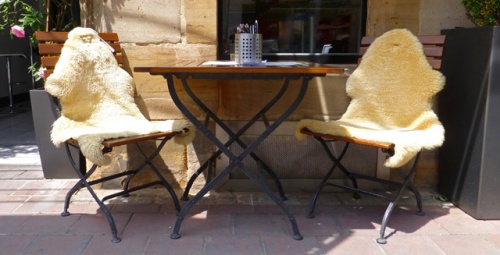
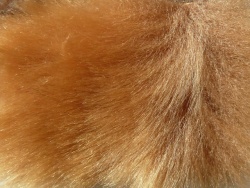
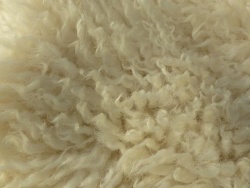




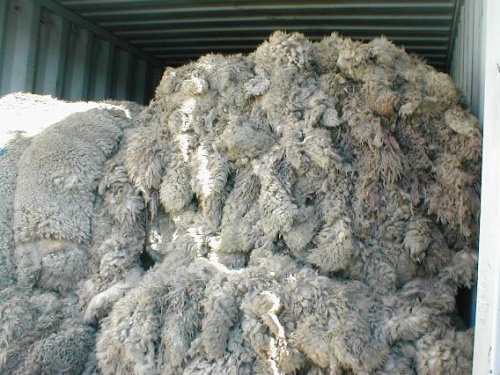
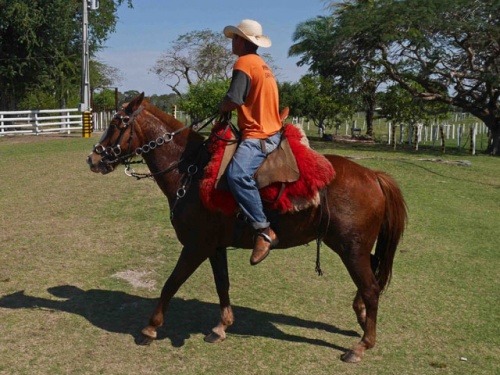
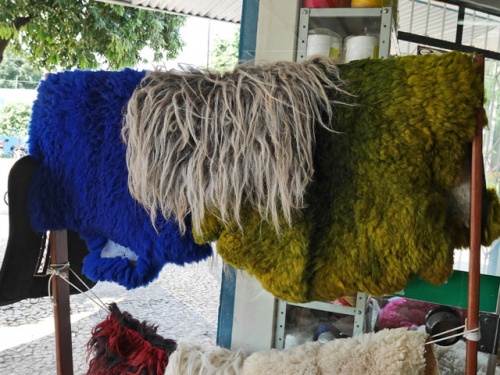
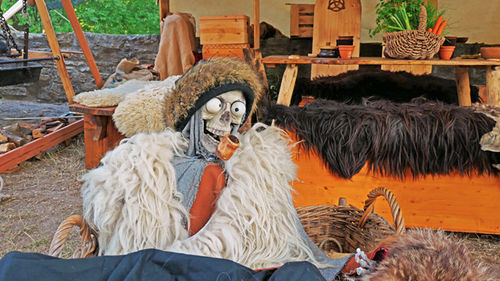
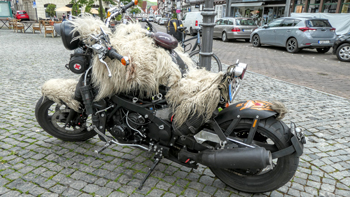
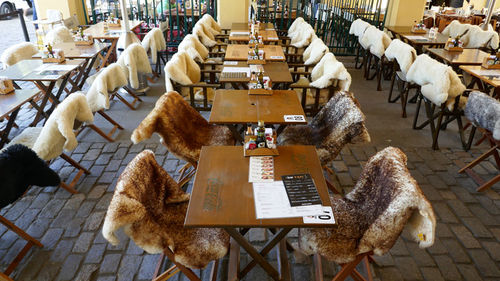
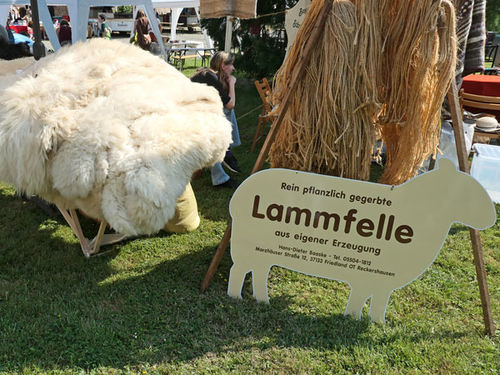
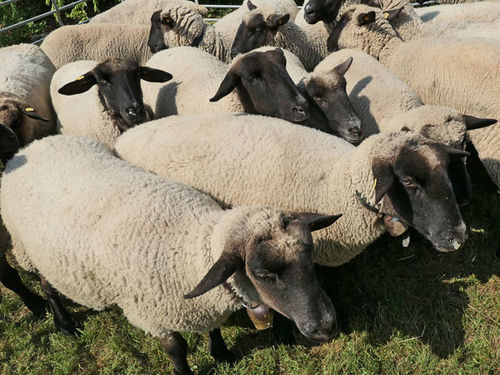
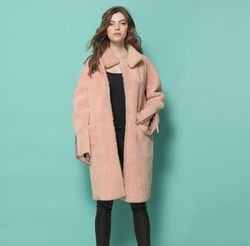
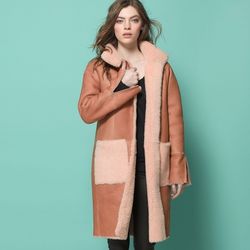
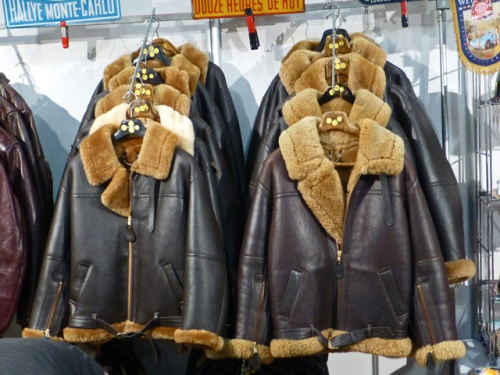
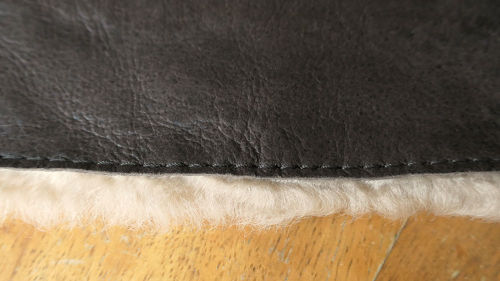
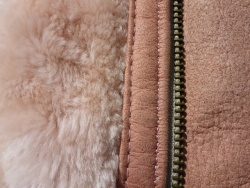
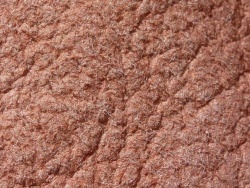
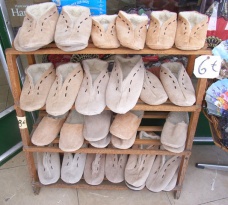
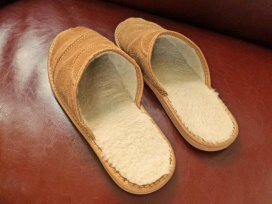
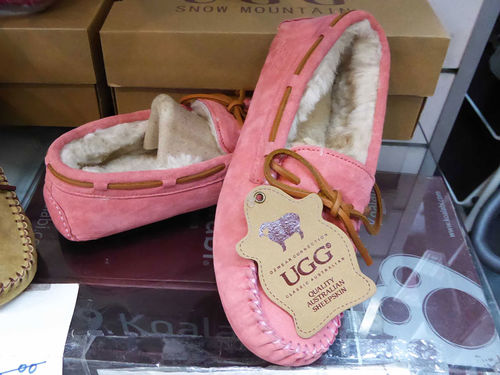
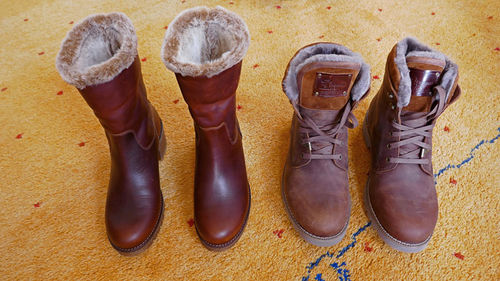
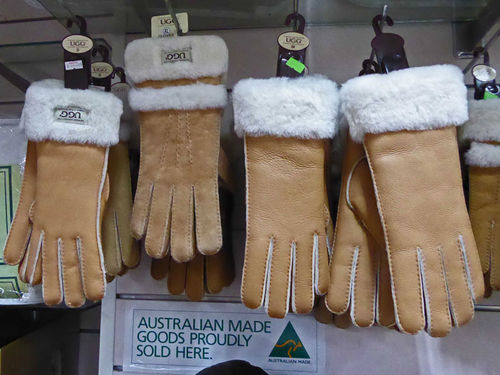
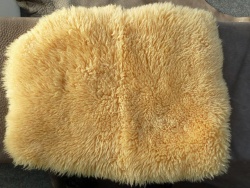
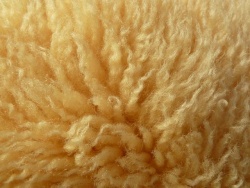

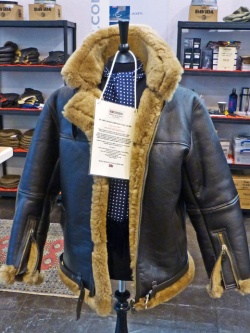
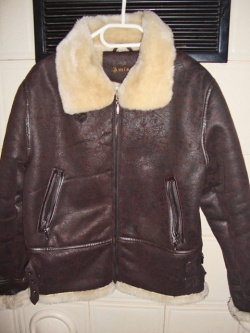
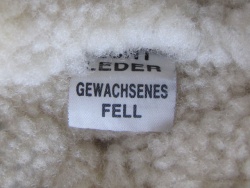
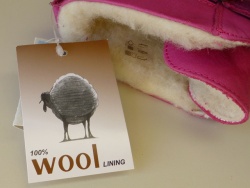

 a kotori web solution
a kotori web solution